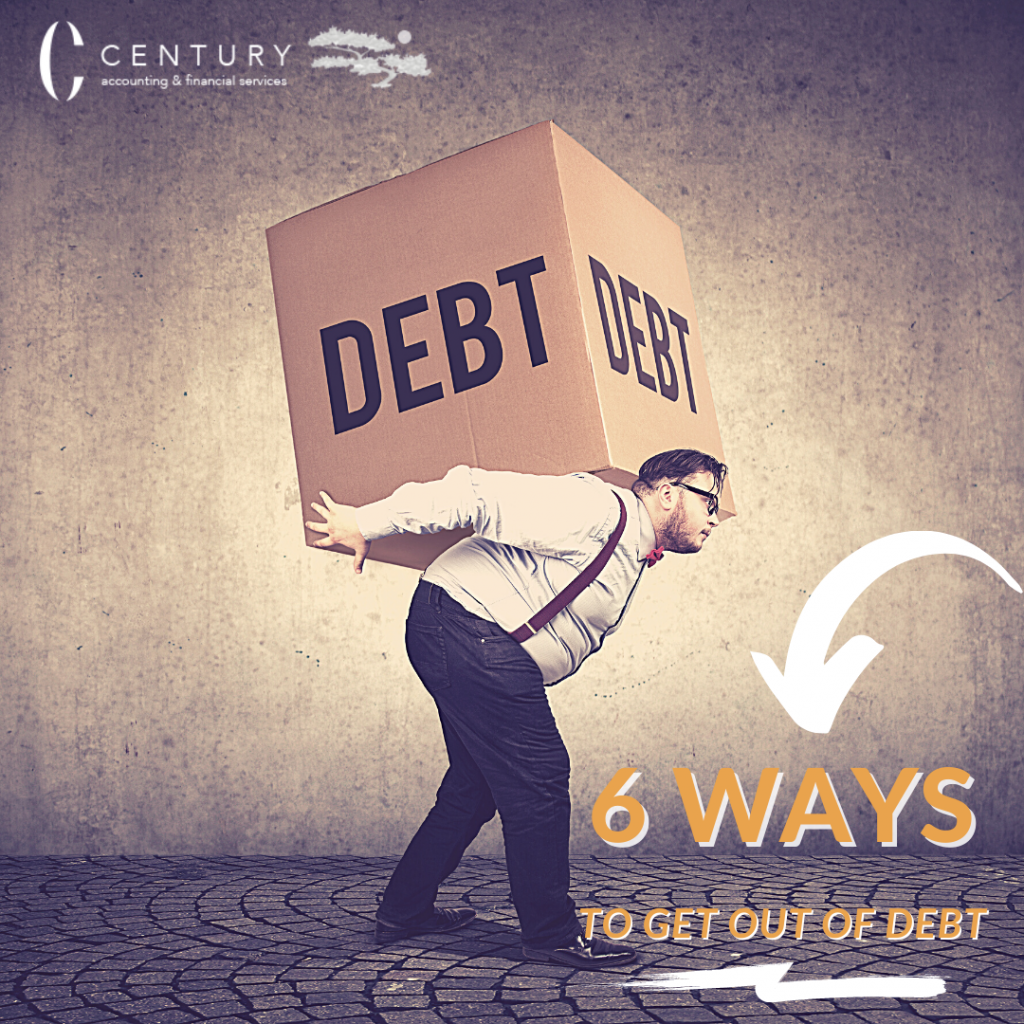
Debt can be overwhelming.
But it doesn’t have to take over your life. Incredibly, it’s so easy (and often fun) to get into debt but painfully difficult to get back out.
Most people would love to pay down their debt or get rid of it altogether. But they don’t know where to start.
The thought of paying it off leaves them feeling frustrated and confused.
However, paying it off can be easier than you think. Adopting a few healthy habits will help you control and manage your money. Everyone who pays off their debt does it differently and often combine strategies to knock out bad debt.
Here Are 6 Ways to Get Out of Debt
Stop creating more debt
I know this is obvious, but nonetheless, important.
This alone won’t get you out of debt, but at least your debt won’t get worse.
Return to the habit of years gone by paying with cash.
Make a budget
Start by making a list of all your monthly expenses.
Now eliminate anything that isn’t essential.
Grabbing a coffee on your way to work?
Paying for a gym membership rather than using the treadmill in your basement?
Cross them out and redirect the money you’ve been spending to your debt payoff.
Only you know what you can conceivably live without.
Grow your emergency fund
To some, an emergency fund sounds counterproductive when trying to get out of debt.
Shouldn’t you be using that money to pay off your debt instead of sticking it in a savings account?
But, an emergency fund can keep you from creating more debt by providing you with a safety net. If an emergency comes up, you can use this money instead of a credit card.
The ideal emergency fund is six to twelve months of living expenses, but at least try to build up to $1,000 in the short-term.
Take action
Decide how much you can afford to pay toward your debt each month, then decide who gets how much first.
There are two common strategies here: the ladder method and the snowball method.
The ladder method involves starting with the account that charges you the highest interest and fees.
Continue making only the minimum payments on your other accounts until the nasty one is paid off. Now move on to the next highest interest rate and start the process all over again.
For people that need to see instant results to keep them motivated, the snowball method is the best process because it’s the quickest way to get to a successful conclusion.
Here’s how it works.
If you owe Lender X $5,000 and Lender Y just $500, pay off the $500 balance first.
Now move on to the next lowest balance.
You’ll have the satisfaction and reward of paying off one, two, then more accounts on a somewhat regular basis, which can give you the incentive to keep going.
You can schedule automatic payments to ensure that you follow through with your plan.
Work with your creditors.
Many people don’t realize that creditors are usually willing to work with you, especially if you are dealing with financial hardship. Explaining that you are unemployed, earning lower wages, or facing the cost of a medical emergency may result in an offer to waive your interest rate temporarily.
Debt settlement is another solution if your accounts are past due or you owe more money than you could repay over a few years.
When you settle your debts, you ask the creditor to accept a one-time, lump-sum payment to satisfy the debt.
Creditors who agree to a settlement offer also agree to cancel the rest of the debt. Still, they typically only accept these offers on accounts that are in default or at risk of defaulting.
Keep in mind that this debt forgiveness may be considered income on your tax return.
Consider credit counseling
If you feel overwhelmed and don’t know where to start with these options, a professional credit counselor may be the answer. They can help you review your debt situation and identify repayment options and money management techniques customized to your situation.
Remember, you’re in this for the long haul.
You don’t want to pay down your debt just to start charging and dig yourself in deep again.
That said, there’s nothing wrong with periodically rewarding yourself—periodically being the operative word here. Give yourself a small treat when you achieve a significant milestone, such as paying off a specific account.
Final Thoughts
Getting out of debt is not impossible. The first step is the hardest.
Are you ready to get started?
“Some debts are fun when you are acquiring them, but none are fun when you set about retiring them.” – Ogden Nash
